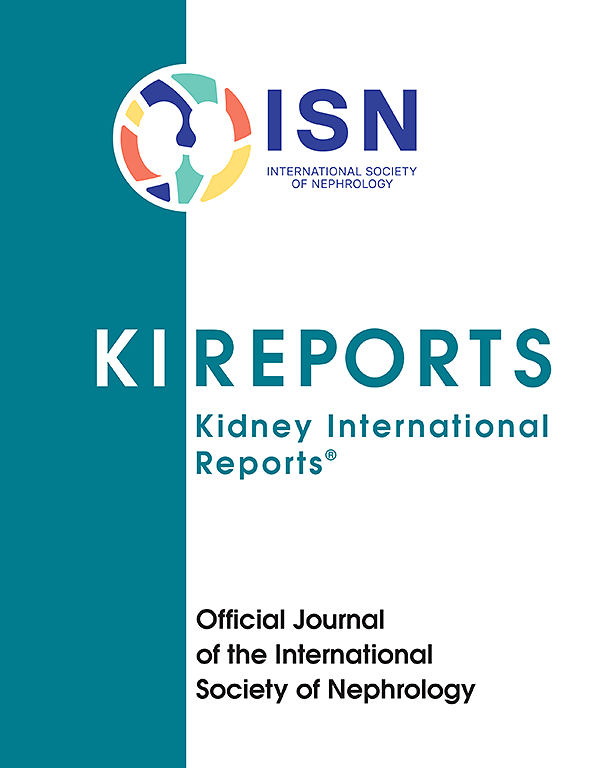Early and Sensitive Detection of Cisplatin-Induced Kidney Injury Using Novel Biomarkers
IF 5.7
2区 医学
Q1 UROLOGY & NEPHROLOGY
引用次数: 0
Abstract
Introduction
We evaluated a panel of novel urinary and serum biomarkers (BMs) for early and sensitive detection of cisplatin drug-induced kidney injury (DIKI) in patients with cancer, comparing their diagnostic accuracy with standard BMs (SBMs).
Methods
In this prospective exploratory observational study, 105 patients treated with cisplatin (“treated” with > 65 mg/m2/cycle), 20 non-cisplatin treated cancer controls (“nontreated”), and 34 “healthy” controls were enrolled. The treated group’s serum and urine samples were collected predose, after 12 hours, and on days 1, 2, 4, 7, 14, and 21. SBMs and novel BMs (NBMs; 8 urinary, 1 serum) were measured, comparing accuracy, percent changes from baseline (PCFBs), and median time to peak values between treated patients and nontreated cancer controls. Blinded adjudication of the treated group’s BM profiles occurred at 2 stages for DIKI diagnosis.
Results
All urinary NBMs had significant PCFBs in the treated group compared with the nontreated cancer control group; most accurately detected cisplatin exposure (area under the receiver operating characteristics [ROC] curve [AUROC] > 0.8). NBMs peaked earlier. In stage 1 adjudication (SBMs) of the treated group, PCFB of urinary NBMs showed no difference between DIKI (n = 24) and no-DIKI (n = 71) groups except for neutrophil gelatinase-associated lipocalin (NGAL) and cystatin C (CYSC). In treated participants, all BMs showed greater PCFBs than control groups, regardless of stage 1 DIKI adjudication. Stage 2 (SBMs and NBMs), DIKI incidence (n = 63) increased by 41%, with most BMs having an AUROC > 0.80 compared with the nontreated cancer control group.
Conclusion
NBMs accurately and timely detected cisplatin exposure and identified “sub-clinical” DIKI undetected by standard acute kidney injury (AKI) criteria, highlighting the limitations of current functional BMs in estimating the true DIKI incidence.

利用新型生物标志物早期灵敏检测顺铂所致肾损伤
我们评估了一组新的尿液和血清生物标志物(BMs)用于癌症患者顺铂药物性肾损伤(DIKI)的早期和敏感检测,并将其诊断准确性与标准BMs (sms)进行比较。方法在这项前瞻性探索性观察研究中,105例接受顺铂治疗的患者(“治疗”为>;65 mg/m2/周期),20名非顺铂治疗的癌症对照(“未治疗”)和34名“健康”对照。在给药前、给药12小时后以及第1、2、4、7、14和21天采集给药组的血清和尿液样本。SBMs和新型BMs (NBMs;测量8例尿液,1例血清),比较治疗组和未治疗组的准确性、基线变化百分比(PCFBs)以及到峰值的中位时间。在DIKI诊断的2个阶段对治疗组的BM概况进行盲法评判。结果治疗组与未治疗组相比,所有尿NBMs均有显著的PCFBs;最准确地检测出顺铂暴露(受试者工作特征曲线下面积[AUROC];0.8)。NBMs更早达到峰值。在治疗组的1期诊断(SBMs)中,除中性粒细胞明胶酶相关脂钙素(NGAL)和胱抑素C (CYSC)外,尿NBMs的PCFB在DIKI组(n = 24)和非DIKI组(n = 71)之间没有差异。在接受治疗的参与者中,所有脑转移患者的PCFBs均高于对照组,无论第1期DIKI判定如何。第2期(SBMs和NBMs), DIKI发病率(n = 63)增加了41%,大多数BMs有AUROC;与未接受治疗的癌症对照组相比为0.80。结论nbms准确、及时地检测顺铂暴露,识别出标准急性肾损伤(AKI)标准未检测到的“亚临床”DIKI,突出了当前功能性脑损伤在估计DIKI真实发生率方面的局限性。
本文章由计算机程序翻译,如有差异,请以英文原文为准。
求助全文
约1分钟内获得全文
求助全文
来源期刊

Kidney International Reports
Medicine-Nephrology
CiteScore
7.70
自引率
3.30%
发文量
1578
审稿时长
8 weeks
期刊介绍:
Kidney International Reports, an official journal of the International Society of Nephrology, is a peer-reviewed, open access journal devoted to the publication of leading research and developments related to kidney disease. With the primary aim of contributing to improved care of patients with kidney disease, the journal will publish original clinical and select translational articles and educational content related to the pathogenesis, evaluation and management of acute and chronic kidney disease, end stage renal disease (including transplantation), acid-base, fluid and electrolyte disturbances and hypertension. Of particular interest are submissions related to clinical trials, epidemiology, systematic reviews (including meta-analyses) and outcomes research. The journal will also provide a platform for wider dissemination of national and regional guidelines as well as consensus meeting reports.
 求助内容:
求助内容: 应助结果提醒方式:
应助结果提醒方式:


